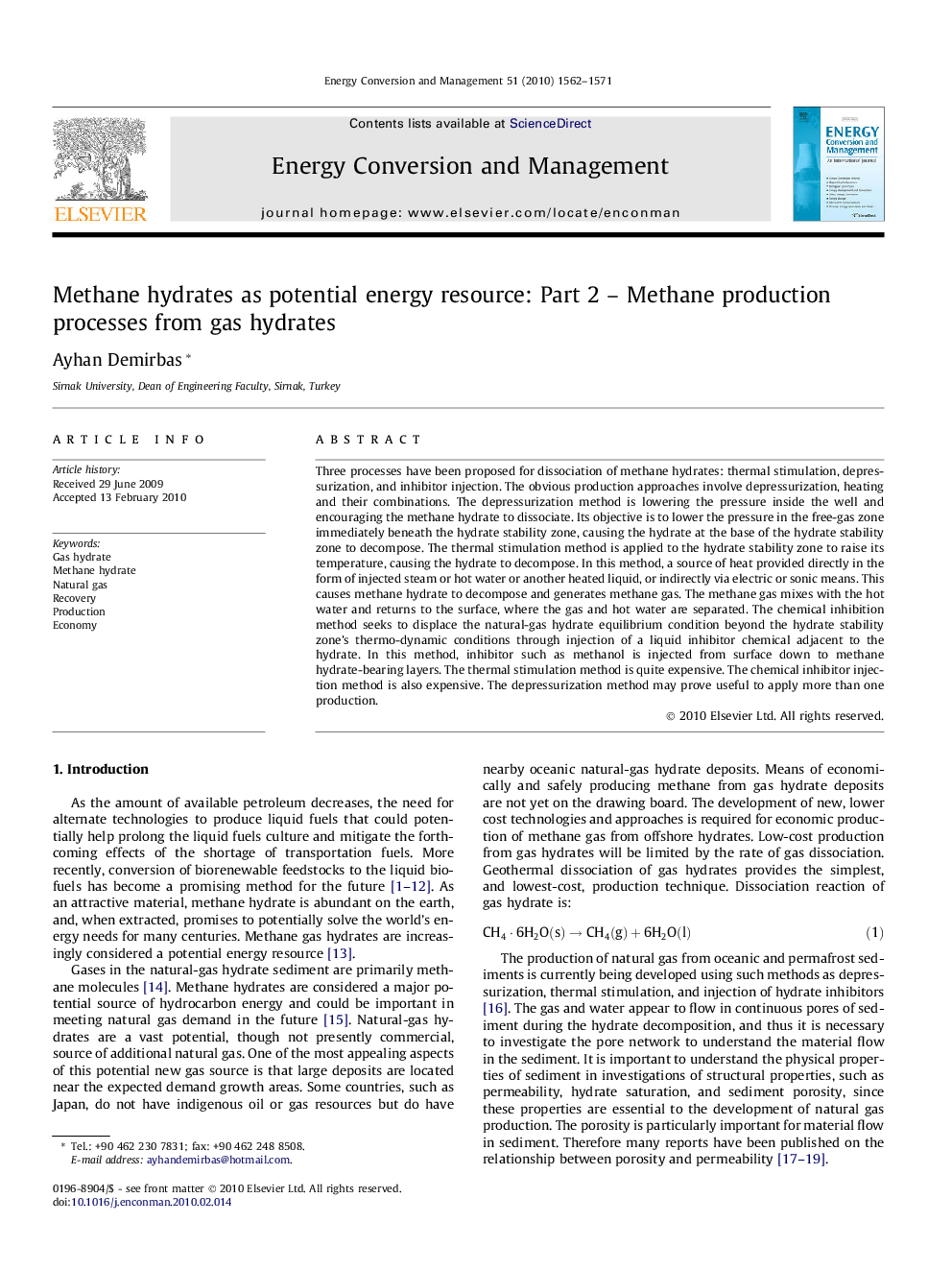| کد مقاله | کد نشریه | سال انتشار | مقاله انگلیسی | نسخه تمام متن |
|---|---|---|---|---|
| 764827 | 897004 | 2010 | 10 صفحه PDF | دانلود رایگان |

Three processes have been proposed for dissociation of methane hydrates: thermal stimulation, depressurization, and inhibitor injection. The obvious production approaches involve depressurization, heating and their combinations. The depressurization method is lowering the pressure inside the well and encouraging the methane hydrate to dissociate. Its objective is to lower the pressure in the free-gas zone immediately beneath the hydrate stability zone, causing the hydrate at the base of the hydrate stability zone to decompose. The thermal stimulation method is applied to the hydrate stability zone to raise its temperature, causing the hydrate to decompose. In this method, a source of heat provided directly in the form of injected steam or hot water or another heated liquid, or indirectly via electric or sonic means. This causes methane hydrate to decompose and generates methane gas. The methane gas mixes with the hot water and returns to the surface, where the gas and hot water are separated. The chemical inhibition method seeks to displace the natural-gas hydrate equilibrium condition beyond the hydrate stability zone’s thermo-dynamic conditions through injection of a liquid inhibitor chemical adjacent to the hydrate. In this method, inhibitor such as methanol is injected from surface down to methane hydrate-bearing layers. The thermal stimulation method is quite expensive. The chemical inhibitor injection method is also expensive. The depressurization method may prove useful to apply more than one production.
Journal: Energy Conversion and Management - Volume 51, Issue 7, July 2010, Pages 1562–1571